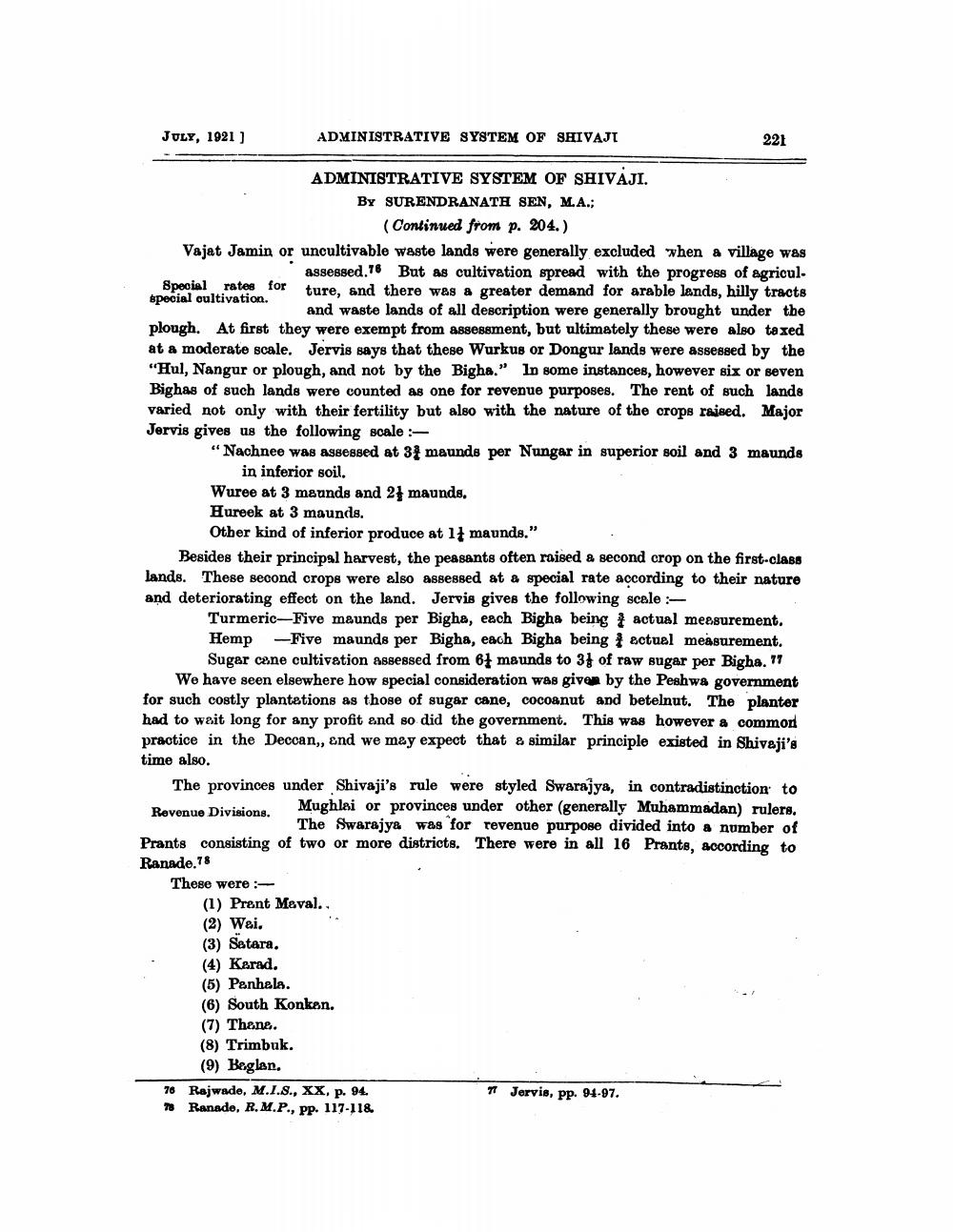________________
JULY, 1921)
ADMINISTRATIVE SYSTEM OF SHIVAJI
221
ADMINISTRATIVE SYSTEM OF SHIVAJI.
BY SURENDRANATH SEN, M.A.;
(Continued from p. 204.) Vajat Jamin or uncultivable waste lands were generally excluded when a village was
assessed. 76 But as cultivation spread with the progress of agricul. Special rates for ture, and there was a greater demand for arable lends, hilly tracts special cultivation.
and waste lands of all description were generally brought under the plough. At first they were exempt from assessment, but ultimately these were also taxed at a moderate scale. Jervis says that these Wurkus or Dongur lands were assessed by the "Hul, Nangur or plough, and not by the Bigha." In some instances, however six or seven Bighas of such lands were counted as one for revenue purposes. The rent of such lands varied not only with their fertility but also with the nature of the crops raised. Major Jervis gives us the following scale -
"Nachnee was assessed at 31 maunds per Nungar in superior soil and 3 maunds
in inferior soil. Wuree at 3 maunds and 2maunds, Hureek at 3 maunds.
Other kind of inferior produce at 17 maunds." Besides their principal harvest, the peasants often raised a second crop on the first-class lands. These second crops were also assessed at & special rate according to their nature and deteriorating effect on the land. Jervis gives the following scale -
Turmeric-Five maunds per Bigha, each Bigha being actual measurement. Hemp Five maunds per Bigha, each Bigha being # actuel measurement.
Sugar cane cultivation assessed from 67 meunds to 31 of raw sugar per Bigha. 11 We have seen elsewhere how special consideration was given by the Peshwe government for such costly plantations as those of sugar cane, cocoanut and betelnut. The planter had to wait long for any profit and so did the government. This was however & common practice in the Deccan,, and we may expect that a similar principle existed in Shivaji's time also.
The provinces under Shivaji's rule were styled Swarajya, in contradistinction to Raven Divisione Mughlai or provinces under other (generally Muhammadan) rulers.
The Swarajya was for revenue purpose divided into a number of Prants consisting of two or more districts. There were in all 16 Prants, according to Ranade.78 These were :
(1) Prent Meval.. (2) Wei. (3) Satara. (4) Karad. (5) Panhela. (6) South Konken. (7) Thene. (8) Trimbuk.
(9) Beglen. 76 Rajwade, M.1.8., XX, p. 94.
77 Jervis, pp. 94-97. 7 Ranade, R.M.P., PP. 117-118




